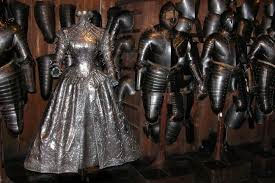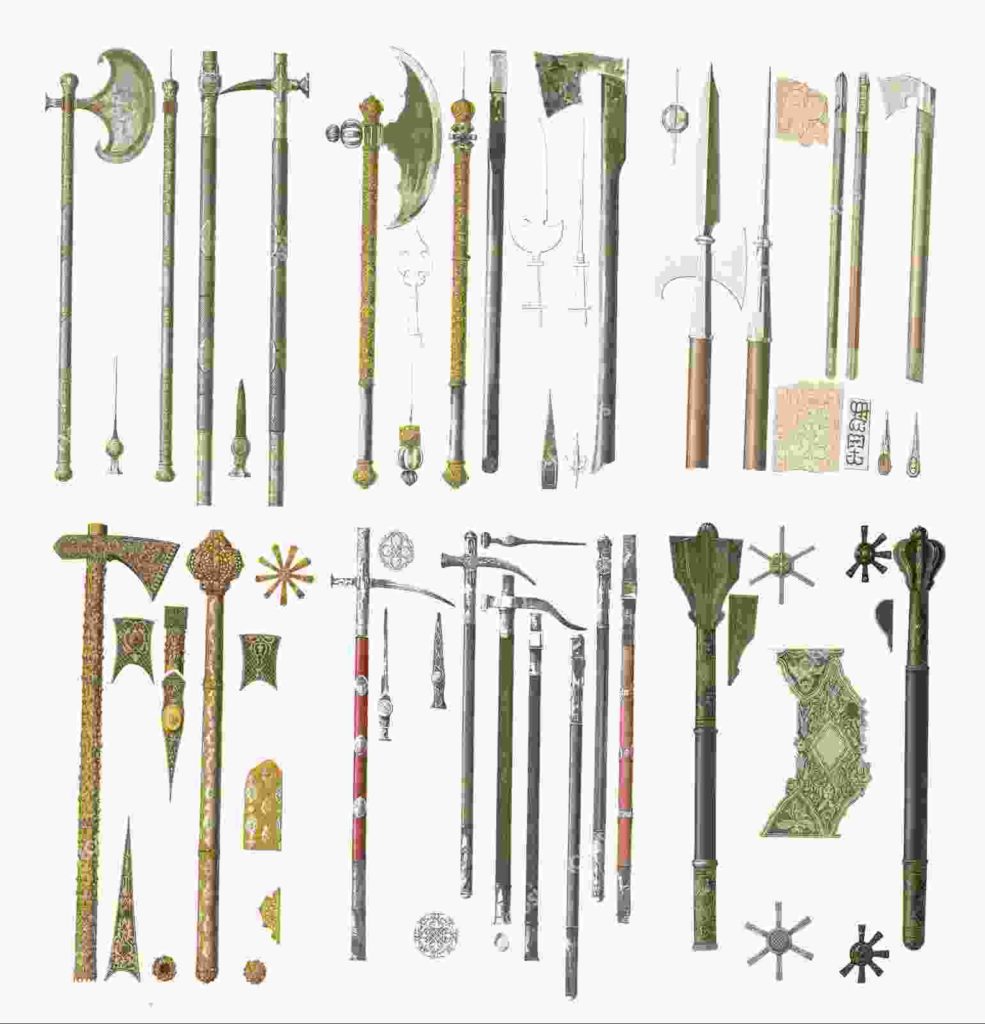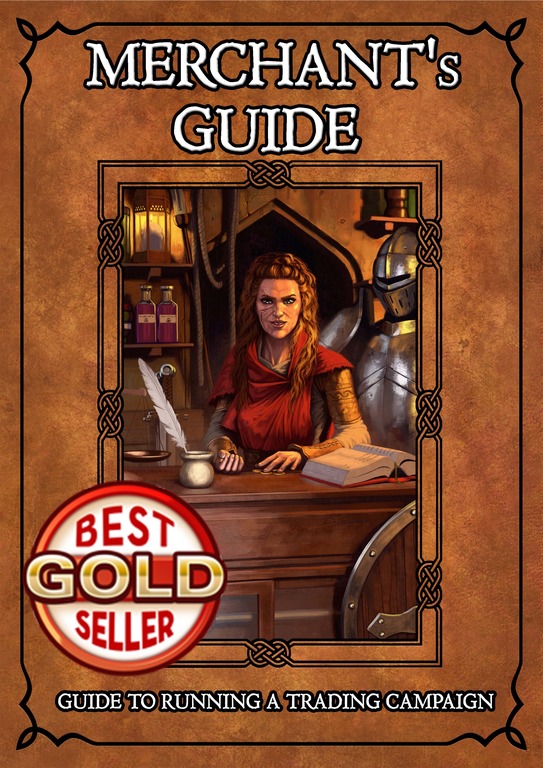TRADE GOODS – FINISHED PRODUCTS
Previous article…D&D – Merchant #2 – Trade Goods – Luxury Goods
Finished products are the backbone of trading activities.
The most common source of of finished products come from the equipment lists presented in almost every Player’s Handbook, no matter the ruleset.
Weapons, armors, torches, ropes, rations and so on.
Finished products are available in almost any market, especially in cities and towns.
For simplicity, we will consider as finished goods some semi-finished goods also.
So, let’s try yo make a list of these goods, without being too specific, neither too generic.
We have published the awesome Merchant Guide, a pdf available on DrivethruRpg. Just have a look at the preview to have an idea of the content.
Also, if you already have an idea on how to run your own trading campaign you may want to have a look at our Trade Goods Generator.
FINISHED GOODS
Armors, beer, bricks, cheese, clothings, dried fruit, furnitures, honey, inks, leather, parchment, potteries, salted fish, spirits, salted meat, tools, weapons, wine, wood planks,
We may add some groups, or expand others, eventually later.
We are just sketching now.
Excellent, we have a rich list of finished goods, now we need to make some observations about each one.
ARMORS

This entry include any type of armor, light, medium and heavy, leather or metal, helmets and shields. As a general rule, a load of armors, will be composed of the same item. So you’ll have a load of chain mails, or plate mails, or studded leather, etc.
WEAPONS

The same we said for armors, will be applied for weapons. Weapons categories are small, medium, large; simple and martial; and so on. We will add a table to determine what category of weapons a load contains.
TOOLS
Tools are somewhat like weapons. Specific tools exist for specific tasks. However we won’t list all type of tools. We will consider tool as a generic good.
CLOTHINGS
Dresses, suits, artisan’s outfits, apparels, uniforms and much more. A crate of clothing may contain any kind of clothing. We will define an average price for this kind of load.
FURNITURE
Chests, wardrobes, beds, chairs, table and so on. These goods usually have high encumbrance, but can be traded for a good profit.
BEER
Usually stored in barrels, beer is the most common drink in taverns.
WINE
Stocked in bottles, pots and sometimes barrels, wine is another common drink. Wine is more expensive than beer, and have higher requisites to be considered decent.
SPIRITS
Usually stocked in small barrels and bottles, spirits are distilled from a wide array of substances. Spirits is the most expensive among drinks.
SALTED MEAT
The only way to ship meat is to preserve it with salt. Salted meat is the basic food employed in rations by adventurers and armies. Salted meat is cheaper than fresh meat and can last for a long time.
SALTED FISH
Fish is abundant in coastal cities and fishing communities. It’s a good and cheaper substitute for salted meat.
BRICKS
This good exist in many sizes. An expanding community will devour bricks at an alarming rate. The best deal a merchant can seal is with a community that is planning to build defensive towers and city walls. Fortunes can be made if the city council is properly persuaded.
WOOD PLANKS
Wood planks are the basic building materials for plenty of stuff. Buildings, furniture, structures and so on. They are a cheaper and quick to find materials compared to bricks.
HONEY
Expensive, but not enough to be considered a luxury good, honey is the best substitute for sugar. Honey usually comes from bees, however other creatures may be employed to produce exotic honeys.
CHEESE
The art of cheese making is old. Cheese, like salted meat and salted fish, is another food that can last long. Well fed armies always have a good provision of cheese in their backpack.
DRIED FRUIT
Quite common, dried fruit may include any kind of fruit. Surplus fruits are usually preserved by drying them, so that this food remains available and edible for months.
LEATHER
Leather is made from cows, pigs and any kind of livestock. Usually, leather and livestock are both traded in the same marketplace.
PARCHMENT
Parchment is usually made from animal skin. However, we define parchment as anything you can employ to write on. It can be made from skins and plants.
INKS
Inks are not very common and thus are expensive. Inks can be made of a large variety of substances, with the most common being cuttlefish ink.
CONCLUSIONS
That’s all for now.
As promised, this article has been short.
Now we need to define the last category of goods, the one we called “raw materials”.
Once we’ll have the list of goods of all three categories – luxury goods, finished goods and raw materials – we’ll prepare a table that summarize all the goods.
Only then we’ll see how to solve two problems.
Base prices and Encumbrance.
Next article…D&D – Merchant #4 – Trade Goods – Raw Materials
